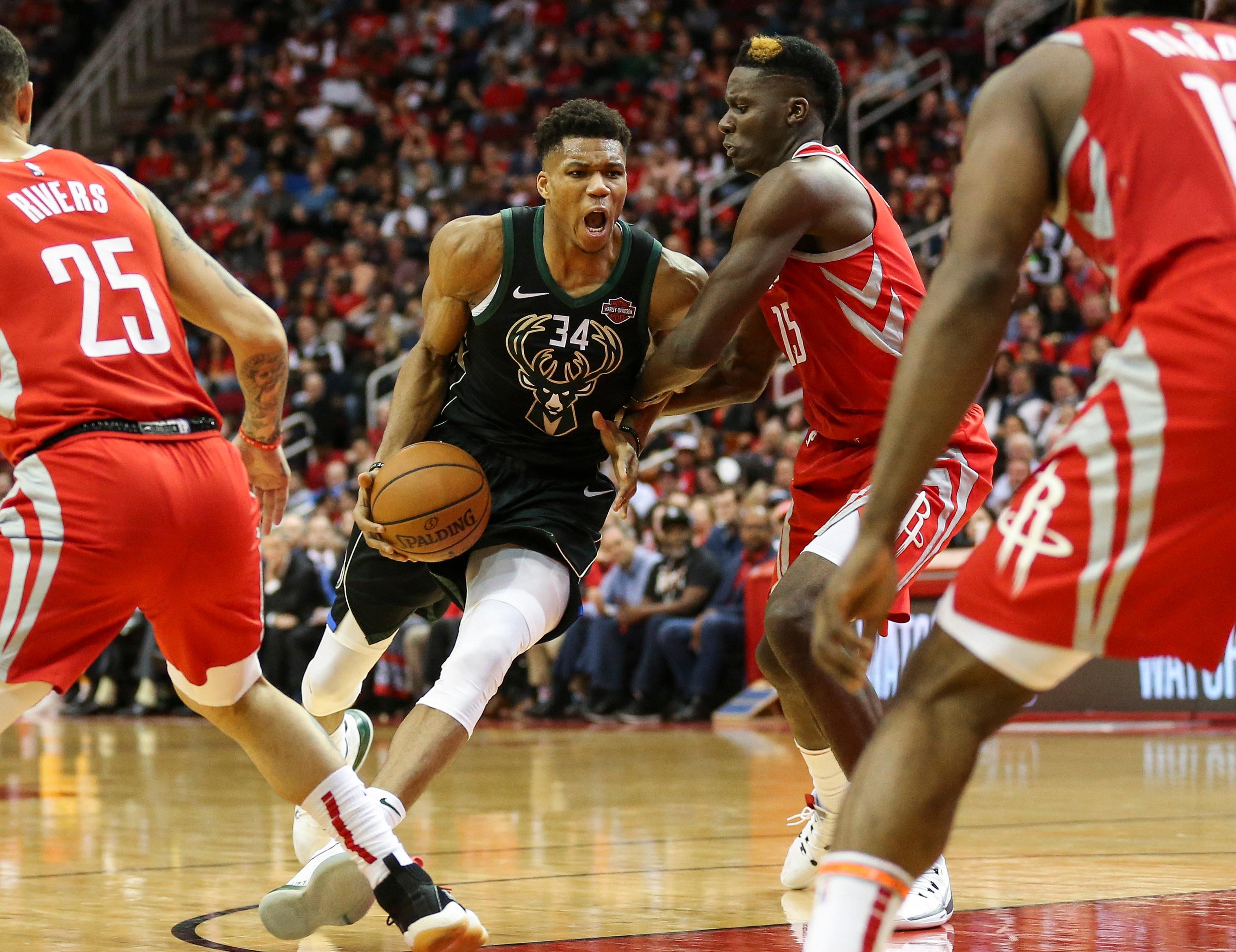
Wednesday’s matchup between the Houston Rockets and Milwaukee Bucks looked like a Finals game from the future. Most NBA teams treat the midrange like lava and prioritize shots from behind the 3-point arc and at the rim. None push it to the extreme like the Rockets and Bucks. Houston finished Wednesday’s game with 48 attempts from 3 (16 of which came from James Harden), while Milwaukee scored a whopping 70 points in the paint. In the end, the Bucks’ affinity for shots at the rim edged out the Rockets’ love affair with the long ball, 116-109. It’s the Bucks’ 29th victory of the season, and it gives them the East’s best winning percentage.
Houston’s downfall may have been during a six-minute, 42-second stretch spanning the end of the third quarter and the start of the fourth when the Rockets didn’t make a single field goal. It was like the knockoff version of last season’s Western Conference finals finale, when the Rockets missed 27 straight 3s. But the result came down to how the Bucks defended Harden. The reigning MVP has been filling up highlight reels as of late with stepback 3s and crossovers. So the Bucks—specifically Malcolm Brogdon, who was stellar on both ends—forced Harden to his right. The goal was to limit the space Harden had to step back and shoot, and force the lefty to drive to the side of his off hand. While Harden typically excels at going downhill and finding open shooters to kick it out to, he had trouble doing so against Milwaukee, which effectively used Ersan Ilyasova as a help defender in the paint. Harden ended up with four fouls, including two charges, and nine turnovers—tied for the second-most turnovers he’s had in a game this season.
I know what you’re thinking: Harden still finished with 42 points. But in a game where he would have likely needed at least 50 to secure a win for Houston, holding him to 10 attempted 3s for most of the game and six assists (three below his season average) was a moral victory that turned into a real one. It’s also the sort of thing that can legitimize the Bucks as not just an elite regular-season team, but one that can carry their success into the postseason.
No team other than the Denver Nuggets has made a bigger leap than Milwaukee this season. The Bucks have Euro-stepped from the bottom of the East playoff picture to the top of the conference in Giannis-like fashion: with three easy steps. Hire Mike Budenholzer. Spread the floor with shooters. Let Antetokounmpo work. If seeing the 7-foot Brook Lopez launch a 28-footer doesn’t signal that something has drastically changed about the league and this team, then I don’t know what will.
As much credit as Budenholzer deserves for bringing the best out of this team on both sides of the ball, it also helps that they have a 24-year-old superstar who can’t be stopped if he sets his body to something. In Houston on Wednesday, Giannis went into overdrive, posting 27 points, 21 rebounds, and five assists in 37 minutes—all without a single dunk and with just one attempt (and miss) from 3. He is Harden’s stylistic inverse, working from the inside out as opposed to outside in. The juxtaposition between the two was striking. Giannis could do anything once he got close to the rim, while Harden was often flummoxed there by the Bucks defense. Harden came alive in crunch time, scoring 10 points in just over two minutes to bring the Rockets back to within three with about two and a half minutes to play. It was a reminder of how quickly the one-man offense can close even a 15-point gap, while Giannis is often forced to set screens and work the offense to generate quality looks. But Antetokounmpo also had far more help; five other Bucks scored in double digits, while only three Rockets besides Harden broke 10.
Forty games into their season, Milwaukee has the fourth-best defense in the league and the third-best offense. That adds up to the best net rating in the NBA, as well as the highest point differential by two points. If it were a team that was expected to do this going into the season—say, the Golden State Warriors or the Boston Celtics—there would be fewer doubts about the legitimacy of their results. But the surprise Bucks are still fighting to prove that they can hang when it matters most, even on a night when they improve to 7-3 against teams currently in the top four of both conferences this season. Can they do it in the playoffs? We’ll ask that question over and over until April. So far, everything they’ve done forces us to believe that they can.